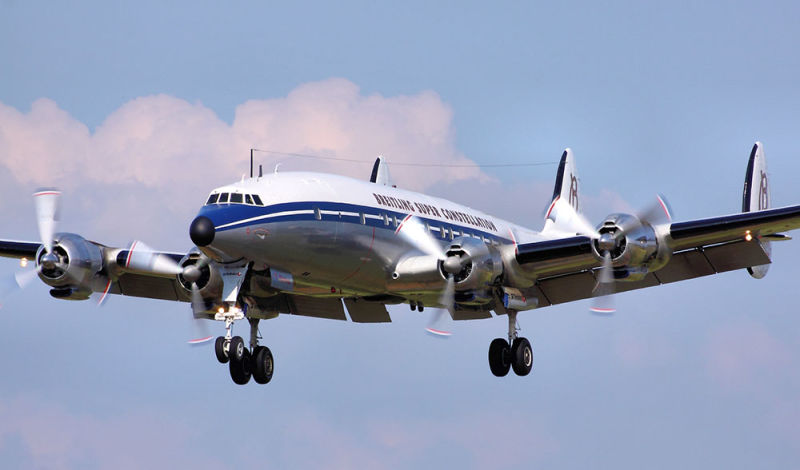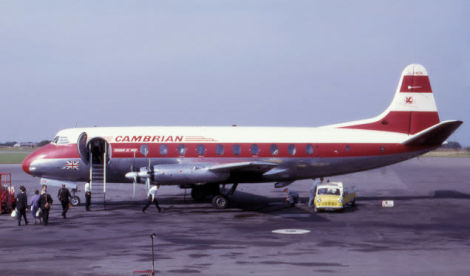Welcome to This Date in Aviation History, getting of you caught up on milestones, important historical events and people in aviation from July 13 through July 16.
July 14, 1951 – The first flight of the Lockheed L-1049 Super Constellation. While the history of aviation tends to focus on firsts, it is also a story of evolution as much as revolution. Oftentimes, an aircraft that was designed for a single purpose is later developed to fulfill a different role, or a successful design will receive variants to enhance performance or capacity. Such is the story of the L-1049 Super Constellation, which began with the first flight of its L-049 Constellation predecessor in 1943.
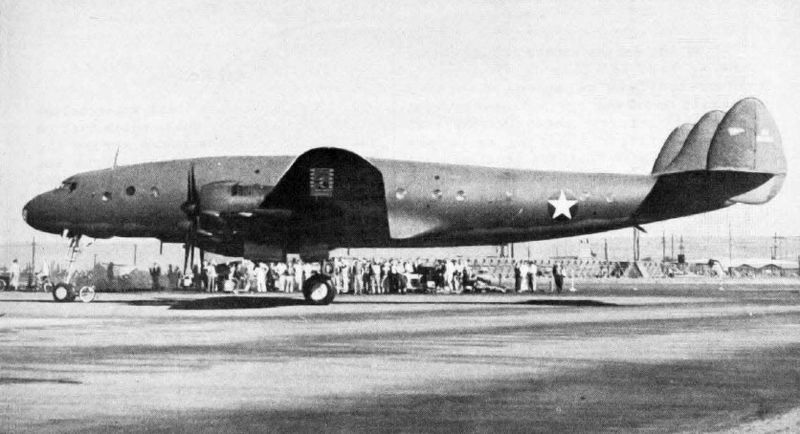
Arguably one of the most graceful aircraft ever to take to the skies, the Constellation, nicknamed “Connie,” started life as a much more plain Jane aircraft, the Lockheed L-044 Excalibur, a run of the mill, four-engine transport that never entered production. In 1939, eccentric billionaire Howard Hughes, owner of Transcontinental & Western Airlines (which would become TWA), held a meeting with Jack Frye, the president of T&WA, along with other Lockheed executives. Among those present was Clarence “Kelly” Johnson, who was destined to become one of America’s greatest aviation engineers. Hughes told Lockheed that the Excalibur wouldn’t meet the needs of his airline, and he wanted something entirely new. So Lockheed went back to the drawing board and, in just three weeks time, presented Hughes with the initial plans for the Connie, now designated L-049. The new airliner, powered by a quartet of Wright R-3350 Duplex-Cyclone radial engines, was the most expensive aircraft produced to date, and Hughes himself funded the purchase of 40 aircraft since T&WA didn’t have the funds to pay for them. The first Connies were pressed into military transport service as the Lockheed C-69, but production turned to the civilian market after WWII. The Connie enjoyed a successful airline career, and Lockheed built a total of 865 airliners.
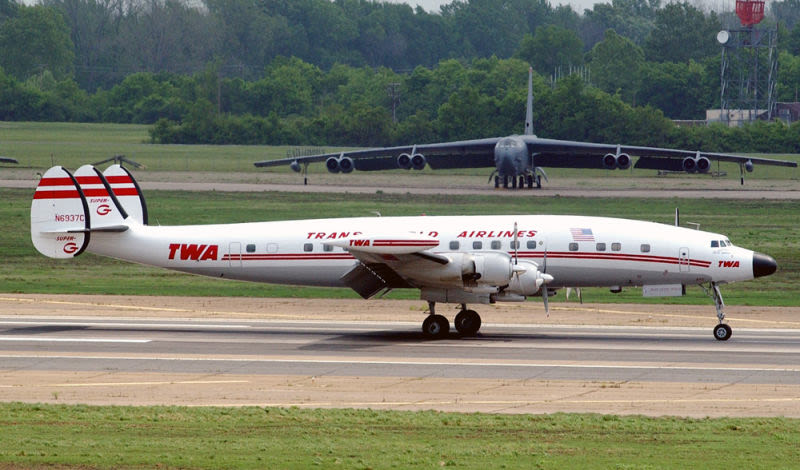
But as flying became more popular, the airlines wanted bigger planes. And Lockheed’s competitors were making strides of their own. In 1950, Douglas came out with the DC-6A, a stretched cargo version of its popular airliner, and were preparing to launch the passenger variant of the DC-6A, the DC-6B, which accommodated 23 more passengers than the Connie. Lockheed had looked into a stretched Constellation, but decided not to build it at the time. However, Douglas’ move forced their hand. Lockheed repurchased the prototype XC-69 Constellation from Hughes Tool Company and lengthened the fuselage by 18 feet, and the newly christened Super Connie now had room for up to 106 passengers.
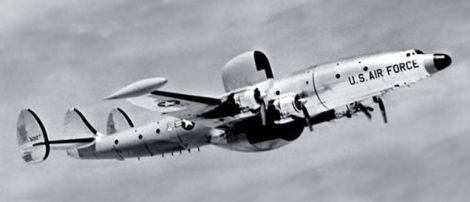
As Lockheed continued to develop the Super Connie, they added more powerful Wright R-3350 Duplex Cyclone 18-cyliner engines. Compared to the DC-6B, the L-1049 could carry a larger payload, though the Douglas airliner still had a greater range, even when wingtip fuel tanks were added to the Super Connie. Other improvements included strengthened wings and increased cabin soundproofing. The Super Constellation also saw service with the US Air Force and US Navy, who flew a total of 320 Super Connies. The Air Force, the EC-121 Warning Star, served as an electronic surveillance platform, while the Navy flew the bulk of the military constellations for transport and early warning. Most of the Super Connies were retired with the advent of jet transports such as the Boeing 707and Douglas DC-8, and the last commercial flight of the L-1049 was made by Dominican Airlines in 1993. The last military variant was retired in 1982. Two Super Connies remain airworthy, with a small number of others awaiting or undergoing restoration.
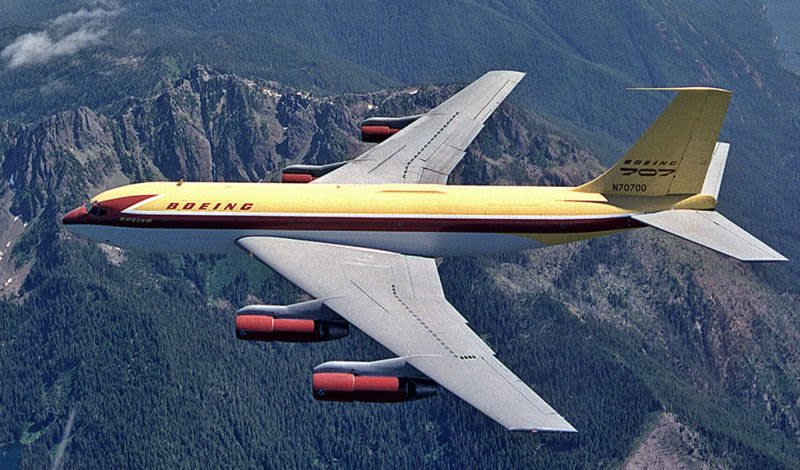
July 15, 1954 – The first flight of the Boeing Dash 80. By the end of WWII, the turbojet engine was beginning to take over as the powerplant of choice for large airliners. However, that change did not take place overnight. After all, technological developments in large piston-powered aircraft during the war had made them relatively safe and reliable, and airlines were reluctant to try something new when the aircraft they had were working just fine. The first step towards commercial jet aviation was taken by de Havilland with their Comet airliner, which first flew in 1949. And though the Comet eventually found a measure of success, it was very much a product of an earlier era, with wings that were swept only on the leading edge and four engines housed in the wing roots. Boeing, however, was already looking to the future.

Two years before the first flight of the Comet, Boeing capitalized on German research that had been seized near the end of the war. Armed with data on the benefits of swept wings, Boeing designed the B-47 Stratojet for the US Air Force with wings swept back at 35 degrees and engines placed in pods suspended from the wings. In doing so, Boeing set the standard for basic airliner design that remains to this day, and the success of the Stratojet inspired Boeing’s foray into the jet airliner business. The international airliner market was still saturated with piston-powered planes, particularly those built by Douglas Aircraft, and none of the airlines was interested in buying an untested airplane. So Boeing figured that the only way to prove that their airliner concept worked was to build and fly one.
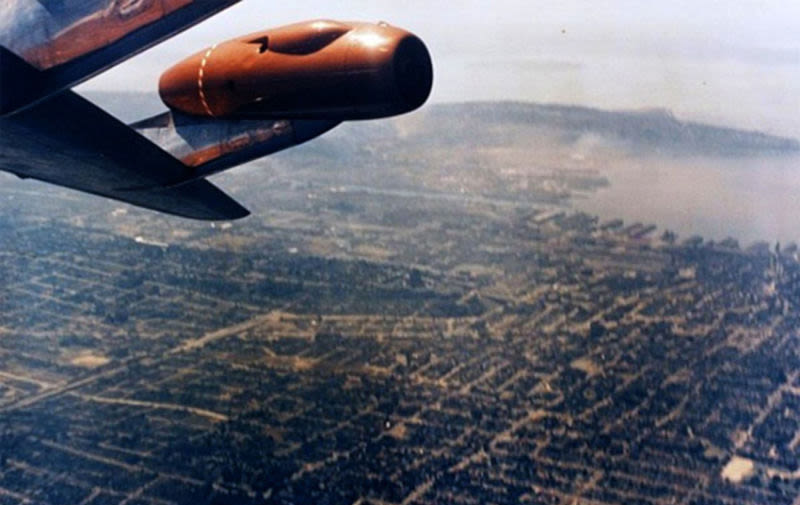
Boeing president Bill Allen took a huge gamble and invested $16 million of the company’s money into the development of a prototype airliner that they hoped would satisfy the needs of both the airlines and the US Air Force, who was looking for a jet-powered aerial tanker to keep their new jet fighters in the air. Following just two years of development, Boeing rolled out the Model 367-80, or “Dash 80,” from their Renton, Washington factory on May 15, 1954. Since Boeing was pitching the jet to the Air Force, the Dash 80 had large cargo doors and very few windows and, just one week after the first flight, the Air Force ordered 29 aircraft designated as the KC-135 Stratotanker. But Boeing still needed to convince the airlines that they had a winner on their hands. In 1955, Allen invited airline executives to Seattle’s Seafair festival to get a look at the Dash 80. In what has become a legendary stunt, Boeing test pilot Tex Johnston, who was supposed to do a simple fly by, instead performed a barrel roll in the Dash 80. He later told Allen that he was just “selling airplanes.”
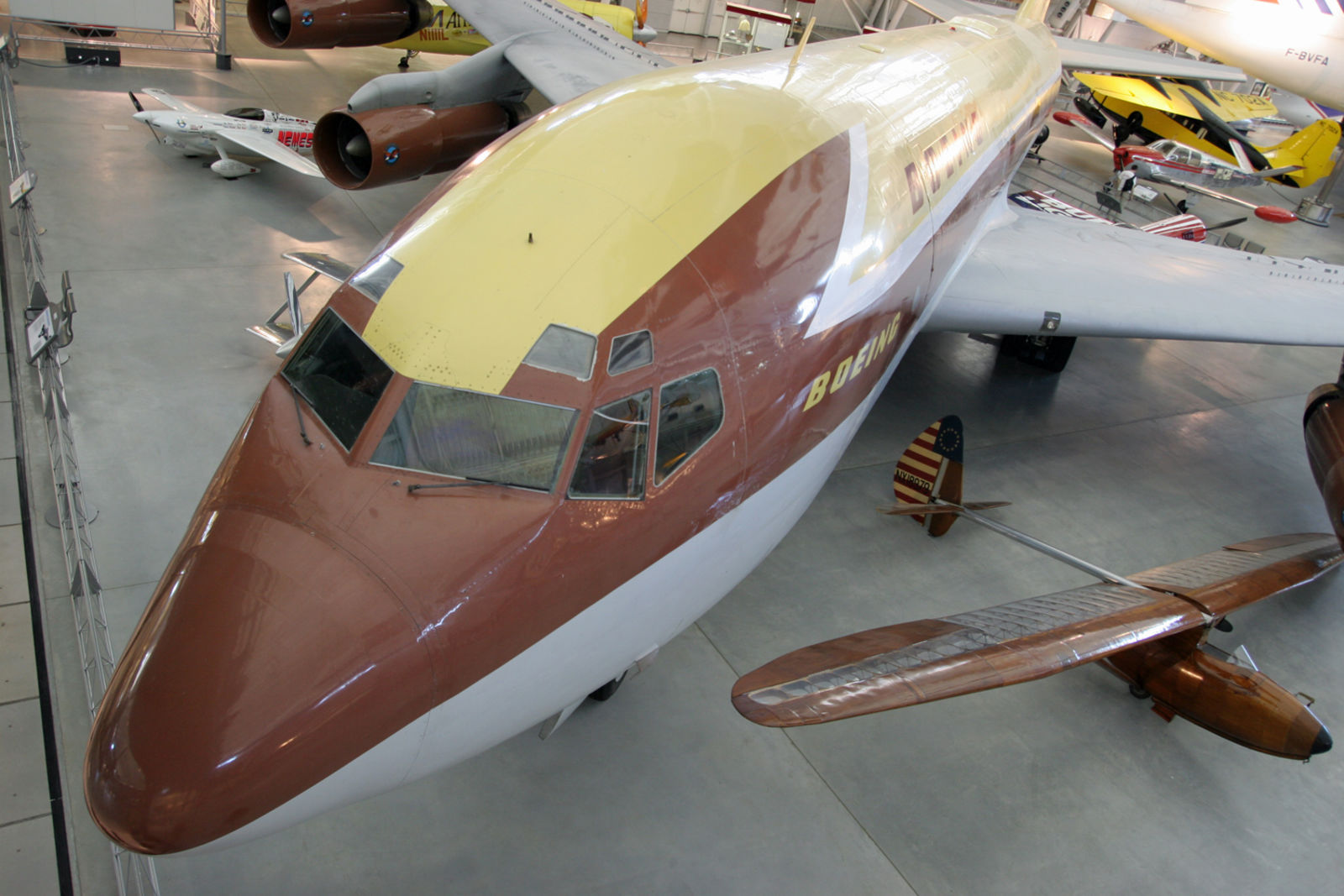
But the bold move paid off, and Pan Am ordered 20 passenger versions of the Dash 80 (though they hedged their bets and ordered 25 Douglas DC-8s at the same time). Two years later, the Boeing 707 took its maiden flight. The 707 was longer than the Dash 80 and KC-135, and the fuselage was widened to allow five-abreast seating, which eventually grew to six-across. With the Dash 80, Boeing truly had a runaway hit on their hands, and eventually produced just over 800 KC-135s and just over 1,000 707s. Only one Dash 80 was ever built, and after production of the tanker and airliner began, the Dash 80 was used as a platform for testing components of the upcoming Boeing 727 tri-jet. Following the Dash 80's retirement in 1970, Boeing donated the aircraft the Smithsonian Institution in 1972, and it sat at the aircraft boneyard at Davis Monthan AFB in Arizona for 18 years. But such a historic aircraft deserved a better fate, and it was finally restored by Boeing in 1990 and then flown to Washington, DC, where it was enshrined at the Smithsonian’s Steven F. Udvar-Hazy Center in 2003.

July 16, 1969 – The launch of Apollo 11. By the early 1960s, the Cold War between the Soviet Union and the West had become the dominant social and political conflict in the world. US President John F. Kennedy characterized the struggle for world supremacy between Communism and Democracy in a famous speech to a joint session of Congress on May 25, 1961 as a “battle...around the world between freedom and tyranny.” While some of those battles were fought in proxy wars, the Space Race provided a stage for the US and Soviet Union to fight for world prestige and technological bragging rights in a decidedly more peaceful way.
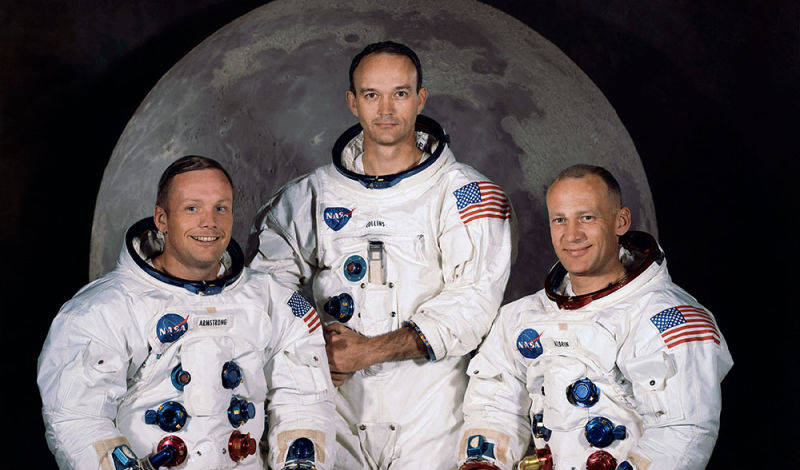
By 1961, the Russians were well ahead of the Americans. They had been the first to put a satellite into Earth orbit in 1957 with Sputnik 1, and were the first to put a man into space when cosmonaut Yuri Gagarin orbited the Earth on April 12, 1961. Following the Russian successes, President Kennedy sought to galvanize the United States into action and challenged the nation to be the first to put a man on the moon. Though Kennedy and NASA trumpeted the scientific gains from such an achievement, he made it clear in a speech on September 12, 1962 at Rice University in Houston that beating the Russians to the Moon was as much a matter of national security as it was a matter of scientific discovery.
We set sail on this new sea because there is new knowledge to be gained, and new rights to be won, and they must be won and used for the progress of all people. For space science, like nuclear science and all technology, has no conscience of its own. Whether it will become a force for good or ill depends on man, and only if the United States occupies a position of pre-eminence can we help decide whether this new ocean will be a sea of peace or a new terrifying theater of war.
Following President Kennedy’s declaration that America would be first to the Moon, NASA began working on the technological means to get there. Project Mecury, which was currently underway and carried a single astronaut to space, was followed by Project Gemini, which carried two astronauts and put the US ahead of the Russians for good in the race to the Moon. The Apollo program which followed was the most ambitious yet, and the first flight of an unmanned Apollo rocket took place in 1966. The first manned flight was to have been Apollo 1 the following year, but a fire in the Command Module during testing on February 21, 1967 killed the three astronauts onboard. Following modifications to the spacecraft, Apollo 7 carried the first Apollo astronauts into space on October 11, 1968, and subsequent missions served to test systems for the voyage and landing. On May 22, 1969, the Lunar Module of Apollo 10 came within 50,000 feet of the lunar surface.
Apollo 11 was the fifth manned mission of the program, and was launched atop the mighty three-stage Saturn V rocket, which propelled the Apollo Command/Service Module and Lunar Module into orbit around the Moon. Astronauts Neil Armstrong, Edwin “Buzz” Aldrin and Michael Collins began orbiting the Moon on July 19, and completed 30 orbits before Armstrong and Aldrin descended to the Moon’s surface on July 20 while Collins remained in orbit in the Command Module. The Lunar Module, piloted by Armstrong, touched down on the Moon at 20:17:40 UTC on Sunday, July 20. After completing the landing checklist, Armstrong made the first of two momentous radio calls: “Houston, Tranquility Base here. The Eagle has landed.”At 02:39 UTC on Monday July 21, 1969, Armstrong descended the Lander’s ladder and placed the first human footprint on the Moon. As he did so, he made the second historic radio call: “That’s one small step for [a] man, one giant leap for mankind.”
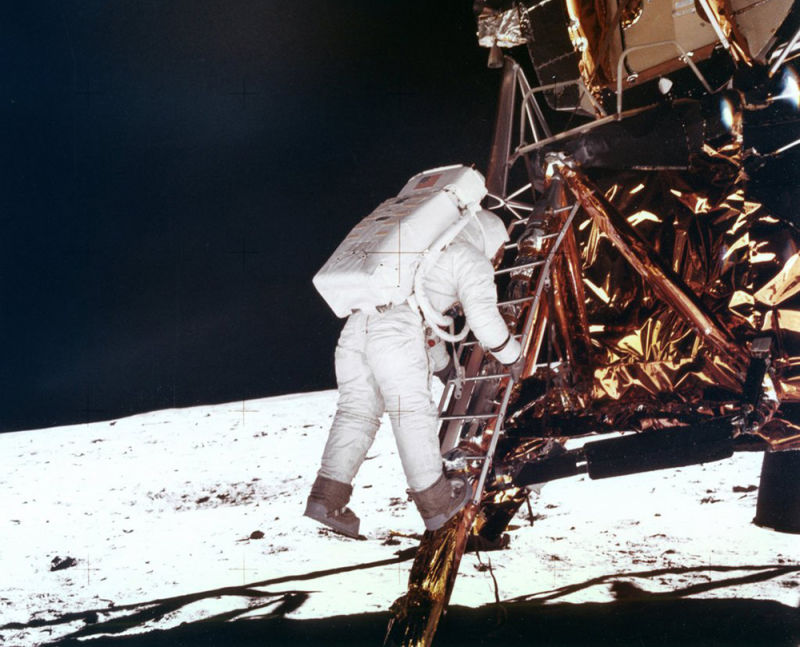
Aldrin then followed Armstrong down the ladder, and the pair spent about two-and-a-half hours exploring the area around the Lander and collected roughly 48 pounds of rocks and other lunar material. The astronauts also planted an American flag on the Moon as a symbol of American achievement, a potent symbol that carried a message of both victory in the Space Race but also a tacit sense of ownership of the Moon. The Russians eventually abandoned their attempts to reach the Moon, and instead focused their their efforts on maintaining a manned presence in Earth orbit.

After roughly 22 hours on the Moon’s surface, Armstrong and Aldrin climbed back aboard the Lunar Module and blasted off for a rendezvous with Collins and the Command Module. The three astronauts then turned back toward Earth, and splashed down in the Pacific Ocean on July 24. There would be five more Apollo missions that reached Moon and planted five more American flags. The ill-fated Apollo 13 mission, while it did not land on the Moon, safely returned the astronauts to Earth. The final flight of the Apollo program was Apollo 17 in 1972. After Apollo 17, the remaining Apollo hardware was used for the Skylab and Apollo-Soyuz projects.

Short Takeoff
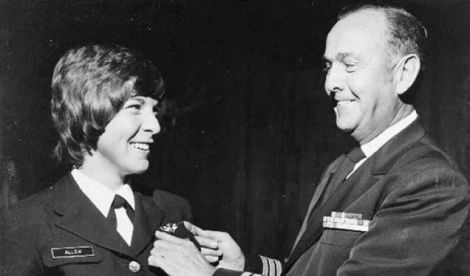
July 13, 1982 – The death of LCDR Barbara Allen Rainey. Born on August 20, 1948, Rainey was the first female aviator in the history of the US military, and received her Wings of Gold as a Naval Aviator in 1974. She was also the first woman qualified as a military jet pilot. After retiring from active duty, Rainey joined the Naval Reserves, but returned to active duty as an instructor flying the Beechcraft T-34 Mentor. She and a student were killed in a training crash while practicing touch-and-go landings. Due to the extensive damage to the aircraft, the cause of the crash could not be determined. Rainey was 33 years old.
July 14, 1971 – The first flight of the VFW-Fokker 614, a twin-engined medium-range jetliner designed and built in West Germany as a replacement for the Douglas DC-3 and notable for the placement of its two engines in pods above the wings rather than below. The location of the two Rolls-Royce/SNECMA M45H turbofan engines avoided the added structural weight of attaching them to the rear fuselage, and also helped eliminate the possibility of ingestion of debris common in underwing mountings. Due to cost and development delays, only a handful were produced before the project was canceled in 1977. Unfinished aircraft were broken up, and the remainder were bought back by the manufacturer.

July 14, 1965 – Mariner 4 flies past Mars. Mariner 4 was part of NASA’s Mariner program that explored planets in the Solar System by flying past to make scientific observations and return photographs. Mariner 4 was launched from Cape Canaveral on November 28, 1964 and, after its arrival at Mars, it sent back the first images ever returned from deep space. The views of a cratered, seemingly lifeless world changed many scientific opinions previously held about the Red Planet. Mariner 4 collected data for two days as it flew past Mars, and remains in its heliocentric orbit following termination of communications on December 21, 1967.

July 14, 1955 – The first flight of the Martin P6M SeaMaster. With the US Air Force becoming the dominant nuclear force after WWII, the US Navy sought to remain relevant in the nuclear strike business by developing a jet-powered strategic bomber that could operate from the world’s oceans and not be tied to carriers or land bases. The SeaMaster arose from a Navy requirement for a sea-based bomber that could carry a 30,000-pound payload over a range of 1,500 miles, and its four Allison J71 turbojets were fitted in the high wing high to prevent ingestion of water. Though the first two prototypes were lost to fatal crashes, development of the SeaMaster continued, and a total of 12 were eventually built. On the verge of entering operational service, the SeaMaster was canceled following the development of the submarine-launched Polaris missile, and the Navy was unsuccessful in marketing the plane as a jet-powered minelayer. Following its cancelation, all copies of the SeaMaster were scrapped.
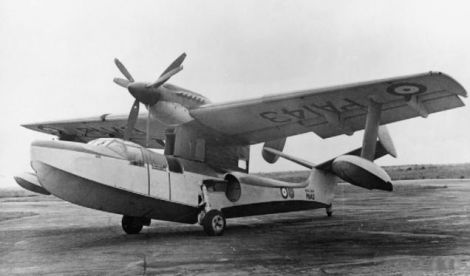
July 14, 1948 – The first flight of the Supermarine Seagull, an amphibious air-sea rescue and maritime reconnaissance aircraft and the last propeller plane built by the famed Supermarine company. As the name Supermarine suggests, the company got its start making floatplanes, and found fame by winning the Schneider Trophy seaplane races in 1927, 1929 and 1931. Work on the Rolls-Royce Griffon-powered Seagull began late in WWII to develop a catapult-launched amphibian to replace the Supermarine Walrus and Sea Otter. However, by 1950, when the Seagull was to have entered service, its role had been taken over by helicopters and only two prototypes were built. Supermarine was incorporated into the British Aircraft Corporation in 1960.
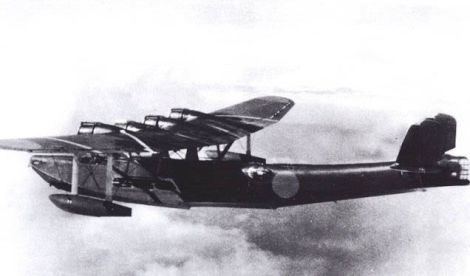
July 14, 1936 – The first flight of the Kawanishi H6K, a maritime patrol flying boat built for the Japanese Navy. Influenced by the work of the Short Brothers in Ireland and the earlier Kawanishi H3K, itself a license-built and enlarged version of the Short Rangoon, the H6K entered service in 1938 and saw service in the Second Sino-Japanese War and WWII. Though vulnerable to modern fighters flown by the Allies during WWII, the H6K remained in service until the Japanese surrender in 1945, but was replaced in front line service by the more modern Kawanishi H8K. A total of 215 were produced.
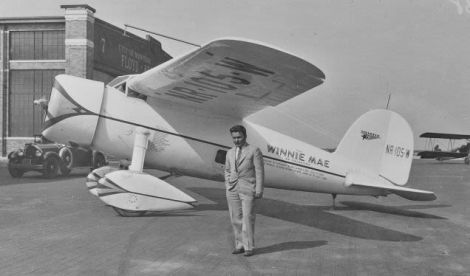
July 14, 1933 – Wiley Post departs on the first solo circumnavigation of the globe. Post had previously made a trip around the world in 1931 with navigator Harold Gatty, finishing the trip in eight days and beating the previous record of 21 days held by the airship Graf Zeppelin (LZ 127). For his second flight, Post set off alone from Floyd Bennett Field, again in his Lockheed Vega Winnie Mae and, using an autopilot and compass in place of a navigator, completed the journey in just over seven days, breaking his own record. Post was greeted in New York by a throng of 50,000 people, and the Winnie Mae now resides in the Smithsonian’s Steven F. Udvar-Hazy Center in northern Virginia.
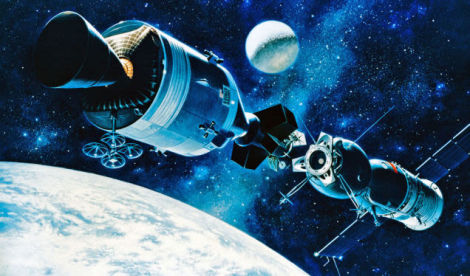
July 15, 1975 – The launch of the Apollo-Soyuz Test Project. As a symbol of the policy of détente pursued by the US and the Soviet Union beginning in 1969, the Test Project was the first joint space program initiated by the two Cold War adversaries. Both the Apollo and Soyuz capsules launched on the same date and rendezvoused in space, with the three astronauts and two cosmonauts joining hands and passing between the two docked spacecraft. The crews then carried out joint scientific experiments. The ships remained docked for 44 hours before separating and returning safely to Earth. Today, Russia and the United States continue their partnership in space aboard the International Space Station.
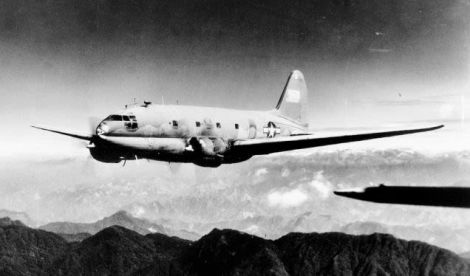
July 15, 1942 – The US Army Air Forces flies its first supply mission from India to China over the Himalayas. In the early days of the fight against Japanese expansion in the Pacific, the only way to resupply Nationalist Chinese and American troops fighting in China was by flying over the eastern Himalayan Mountains, which pilots referred to as “The Hump.” The dangerous and arduous supply missions, flown first by Douglas C-47 Skytrains and later by the untested Curtiss C-46 Commando, eventually ferried 650,000 tons of supplies against the loss of 594 aircraft and nearly 1,700 personnel.
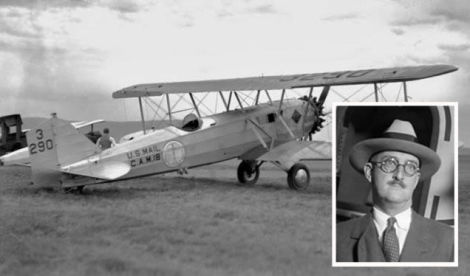
July 15, 1916 – William Boeing founds the Pacific Aero Products Company, the forerunner of the Boeing Airplane Company. After finding success in the lumber industry, Boeing turned his attention to aircraft and went into business with George Westervelt to found the Pacific Aero Products Group and building their first aircraft, the Model 1. With America’s entry into WWI, Boeing changed the name to Boeing Airplane Company and built 50 aircraft for the US Navy. Following the war, Boeing concentrated on commercial aircraft, and built an airmail operation that eventually became United Airlines. William Boeing left the company in 1937, but Boeing went on to become one of the largest manufacturers of civilian and military aircraft in the world.
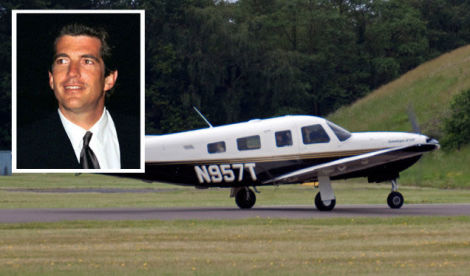
July 16, 1999 – The death of John F. Kennedy, Jr, the only surviving son of US President John F. Kennedy and First Lady Jacqueline Kennedy. Kennedy had departed Essex County Airport in New Jersey in his Piper PS-32R Saratoga (N9253N) for a flight along the Connecticut coastline to Martha’s Vineyard when the plane crashed into the Atlantic Ocean, killing Kennedy along with his wife Caroline Bessette and her sister Lauren. The National Transportation Safety Board cited the probable cause as pilot error, saying that Kennedy likely became disoriented while flying over water at night. Kennedy was not qualified for instrument flight conditions and, while conditions at the time did not require IFR flying, other pilots cited the lack of a visual horizon due to hazy conditions.

July 16, 1965 – The first flight of the North American Rockwell OV-10 Bronco, a lightweight, STOL aircraft developed for the US Navy, Air Force and Marine Corps for observation, forward air control, helicopter escort, armed reconnaissance, gunfire spotting, utility and ground attack. Despite its diminutive size, the Bronco can carry up to 6,000 pounds of external stores, as well as paratroops or stretchers, and its turboprop engines allow for at least three hours of loiter time over the battlefield. The Bronco first saw service with the US Marine Corps in Vietnam, and has since served both the US Air Force and US Navy. In civilian use, the Bronco has served NASA and as a firefighting aircraft, and military versions have recently returned to the skies over Afghanistan and Syria in the fight against ISIS.
July 16, 1948 – The first flight of the Vickers Viscount, a medium range, pressurized airliner and the first airliner in the world to employ turboprop engines. Development of the Viscount resulted from the work of the Brabazon Committee, a group founded to promote civil aviation in England following WWII. The Viscount entered service with British European Airways (BEA) in 1953 and became one of the most popular and successful post-war transport and cargo aircraft, with 160 aircraft ordered by only the second year of operations. A total of 445 were produced from 1948-1963, and the type was finally retired in 2008.
Connecting Flights
If you enjoy these Aviation History posts, please let me know in the comments. And if you missed any of the past articles, you can find them all at Planelopnik History. You can also find more stories about aviation, aviators and airplane oddities at Wingspan.
